Something went wrong (in the best way) when I recently ordered a few clematis vines to add to my garden. I was in the mood to add a few fantastic climbing vines to my garden. I was expecting four plants. But when the boxes arrived, I somehow got 16 (this is obviously not a complaint, just a statement of oopsy-daisy fact).
With eight Clematis Diamond Ball (which is a beautiful double white/ light blue clematis) and eight Clematis ‘Sweet Summer Love’ (which is a dark purple clematis), I struggled to find homes for all of them. After I planted three of the ‘Sweet Summer Love’ (and worked out places for three more), I still had ten plants! (and all the Diamond Balls).
I realized I needed to do some removal of other plants and bed prep to make room for the rest. But even after that, I still need to create a home for at least five more. With over a quarter of the plants left, I started playing a new little game around here…. called “Where to put another new clematis plant?”. 🤔
The rules are easy, but the game is hard. Finding sixteen places to plant beautiful clematis in the garden is a challenge, even in a big garden like mine.
Climbers need a place to climb, and while I’m still working on where they all will go, I’m inspired by the dilemma, and I found these sixteen clematis design inspirations.
1) Plant Clematis vine near a container garden and let it scramble through other textural plants.
Plant the clematis near the base of the plant it will scramble through. Shrubs are a great option – and the other plants will act as the support for the clematis blooms.
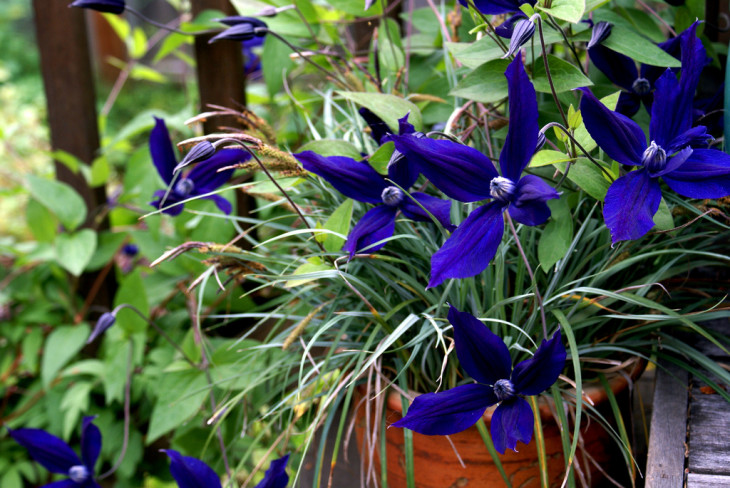
2) Train your clematis vines on a staircase railing.
Make sure you can still put your hand on the railing without hurting the plant (if you need to).
Years ago, I had a small raised deck in a west-facing garden in Colorado. I grew sweet autumn clematis up the supports and over the railing of the deck.
The base of the plant was shaded, and the body of the plant was very happy getting absolutely baked by the full sun in the afternoons.
Clematis plants tend to like a spot where their root ball and root system are shaded and protected, but their leaf stems and flowers can be in a sunny spot. The profusion of small white flowers over these healthy plants covered the entire railing in just one season.
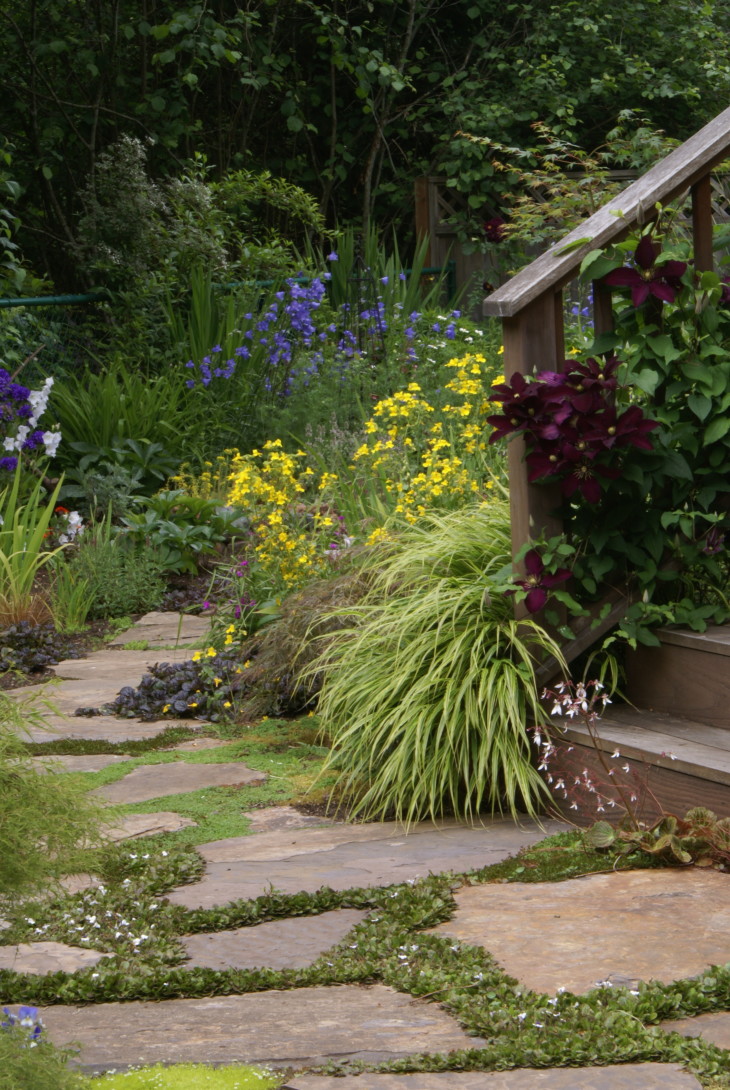
3) Grow climbers like clematis over a picket fence in a cottage garden.
When you start to grow plants over more permanent garden features (like fences), you will anchor your design. It will give your planting design a more established and mature feeling in your garden.
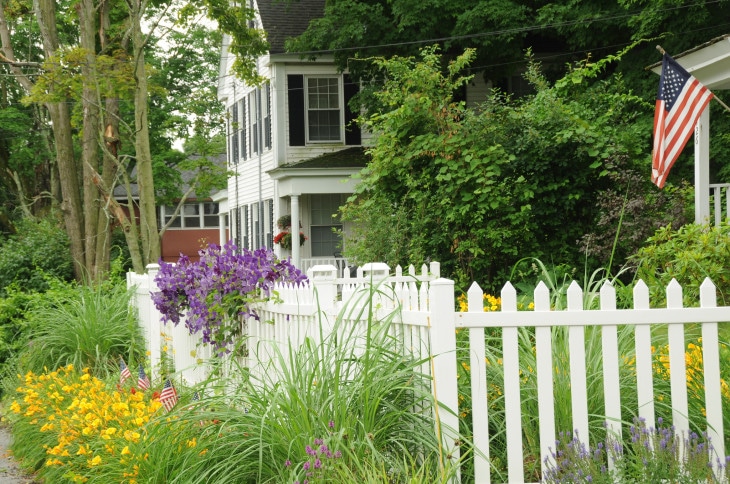
4) Pretty-up a chain link fence.
Chain link fencing is cheap, but it isn’t pretty. But sometimes, you just have to work with what you have.
Covering it up with a nice clematis vine is a good option.
Many clematis varieties will bloom prolifically. Clematis Montana varieties (for example) tend to have smaller and simpler clematis flowers, but they are profuse bloomers (if given plenty of sun and well-drained soil).
Clematis Montana will grow as much as 20-40 feet (so they are particularly great for covering walls and fences) and often have a pleasant fragrance.
Vigorous clematis like Montana will need to be pruned annually for best results. Different types of clematis have different pruning needs (so you need to understand which pruning group your clematis is in). You may not ever need to prune clematis that are slower growing.
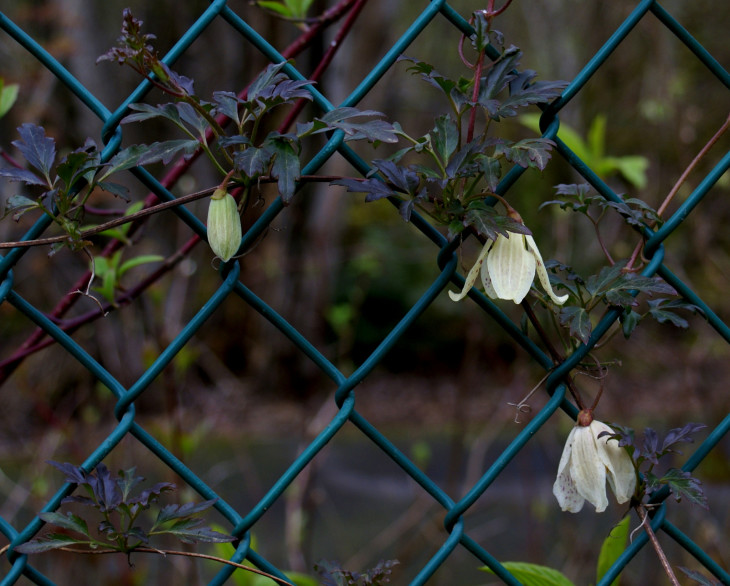
5) Plant in a large container and grow on a topiary frame.
If you are planting in a container, it is a good idea to follow the rule of thirds.
In this case, make sure your climbing structure (and ultimately your plant) is at least 2/3 of the total height. (This includes the height of your container).
So, if you have a 1′ tall pot – get a topiary frame that is at least 2′ tall (for a 2/3 – 1/3 ratio). (or maybe consider growing it into a spiral shape?)
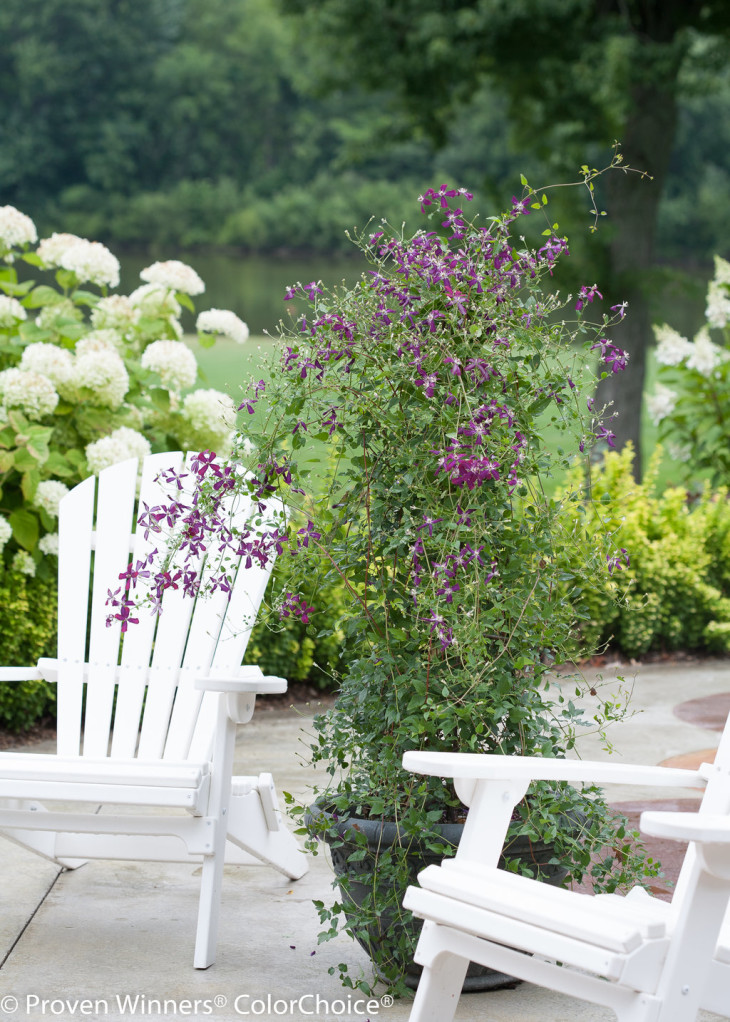
6) Hide the mailbox with a climbing flower vine
Anything vertical in your garden can be a growing support… so why not turn utility into something amazing?
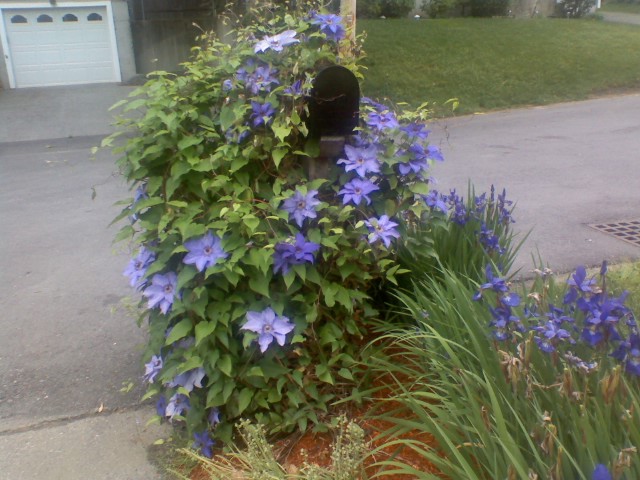
7) Intertwine a dainty clematis vine with another climber (like roses).
This isn’t very different than growing it through another shrub. But roses can be sturdy climbers themselves, and when you achieve the double bloom look, I promise some gullible visitor will think this is all one amazing plant, and you can bask in that coveted good gardener glory. 😉
It is worth noting also that clematis have lovely green leaves (whereas roses have darker and sometimes leathery leaves). Roses are almost never prized for their foliage so that they will benefit from some extra fresh green leaves.
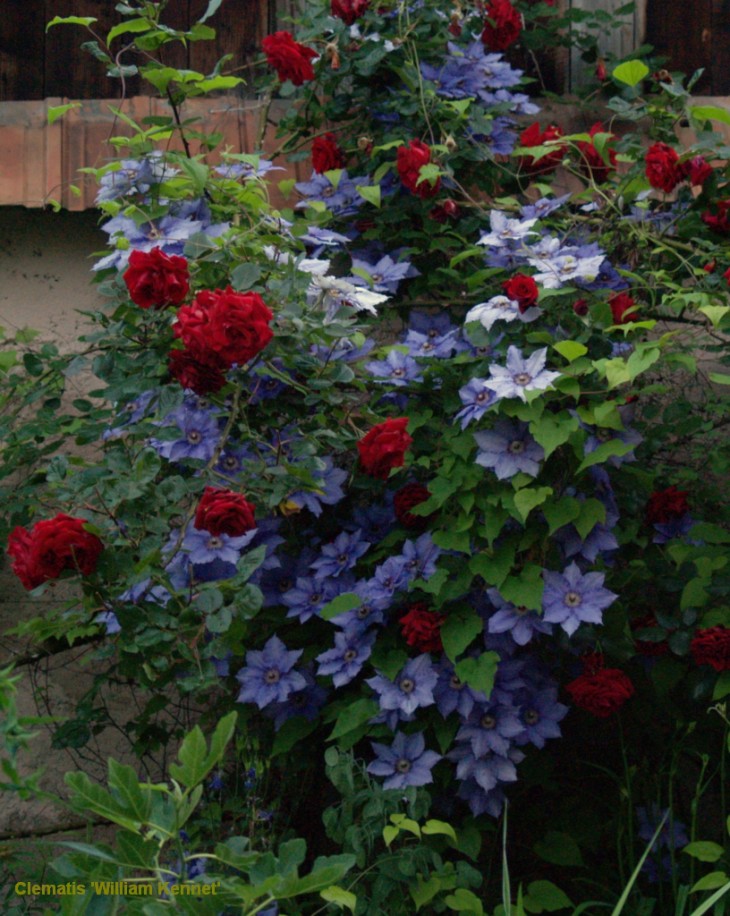
8) Frame a shed door.
It is worth knowing if the clematis cultivars that you are growing are plants that bloom on old wood, new wood, or both. This will impact how you prune your plants. Do not hard prune a plant that blooms on old wood (you will not get any flowers).
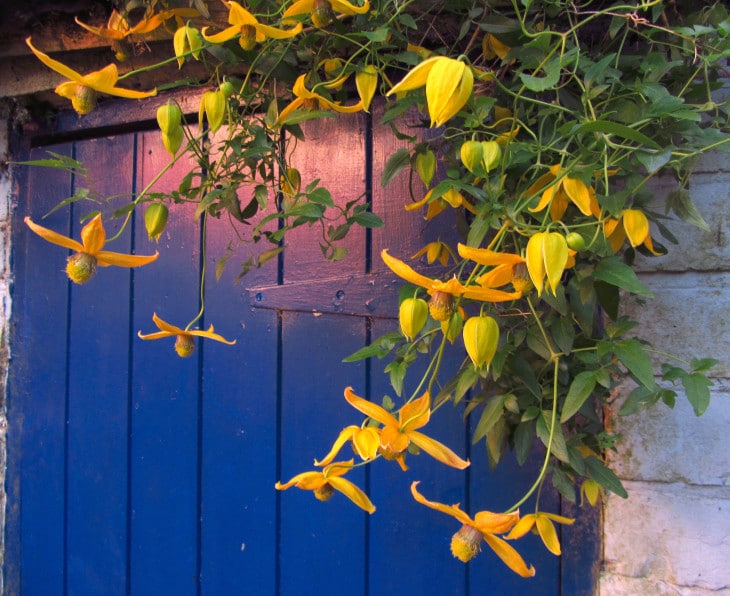
9) Cover an old ladder.
Some clematis have weak stems, so it is a good idea to plant them up sturdy structures. These are not heavy plants, so you don’t need a strong trellis like you might for wisteria or other heavy woody stemmed plants – but they will look their best when you can get the beautiful flowers up to eye level.
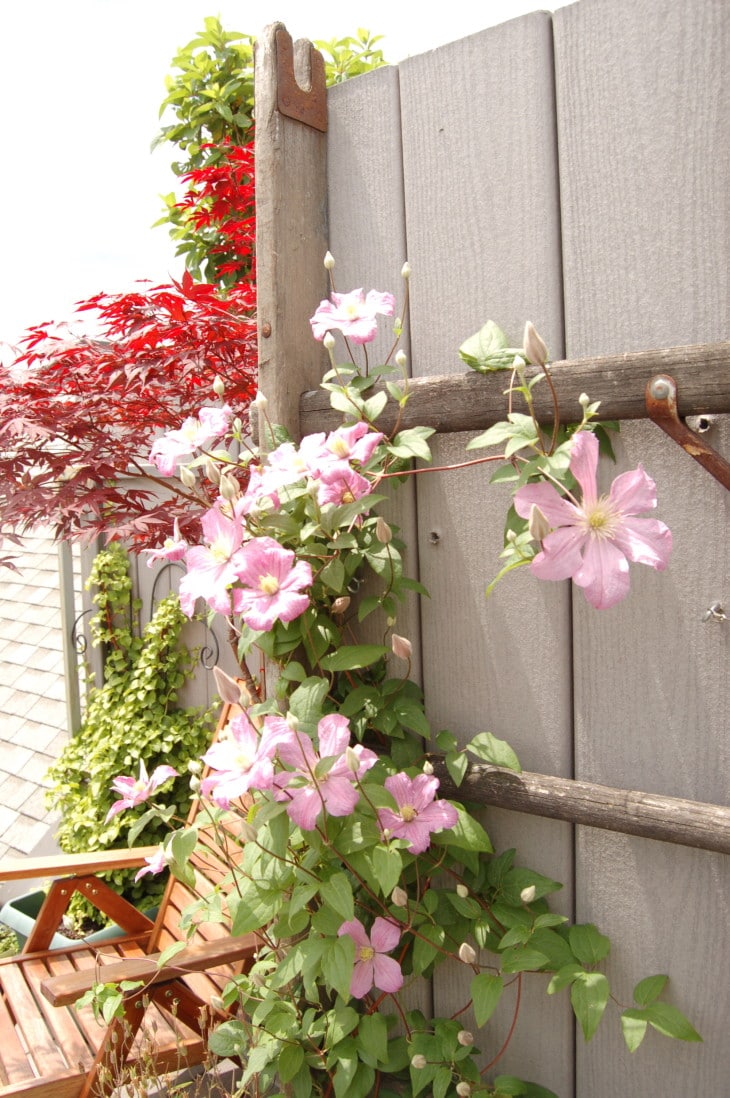
10) Romantically dangle flowering vines over a rustic shed.
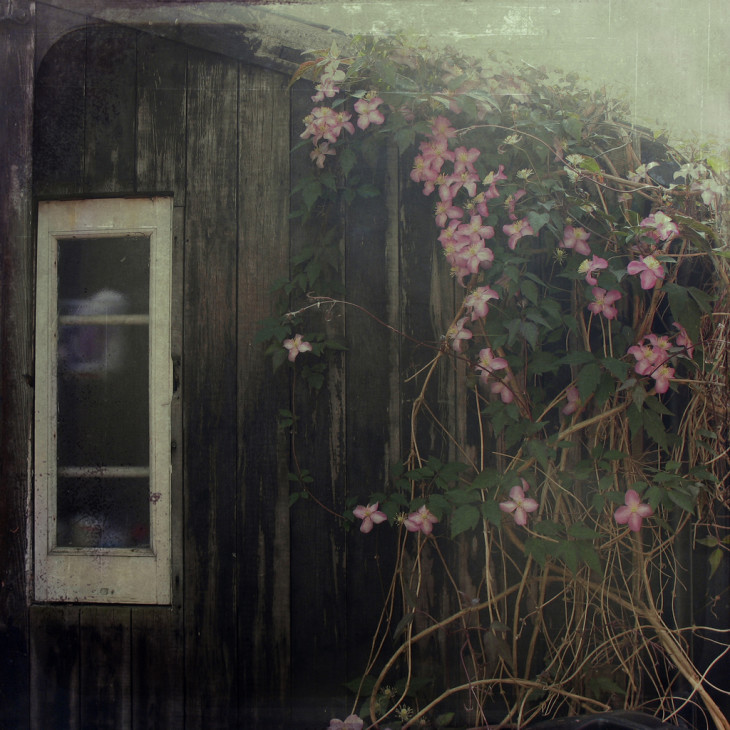
11) Train flowering clematis vines over a lamppost
(Yes, I know it isn’t actually on a lamppost – but you get the idea… p.s. It is actually growing on an apple tree, which is another bonus option).
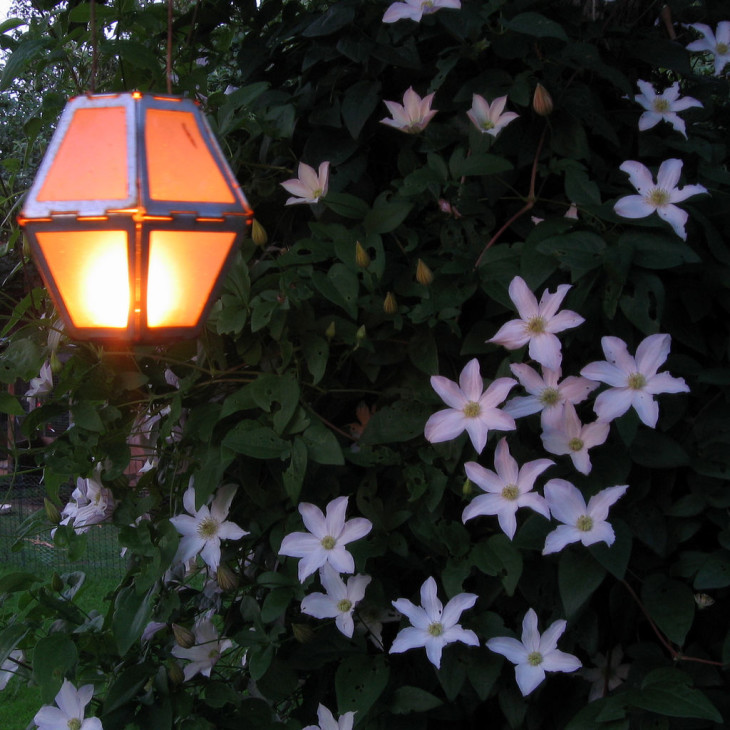
12) Support climbing flower vines with a trellis or a downspout.
If you have newly planted your clematis, remember that it might not bloom right away.
New plants generally will not flower in their first growing season – and often need a couple of years before they reliably bloom.
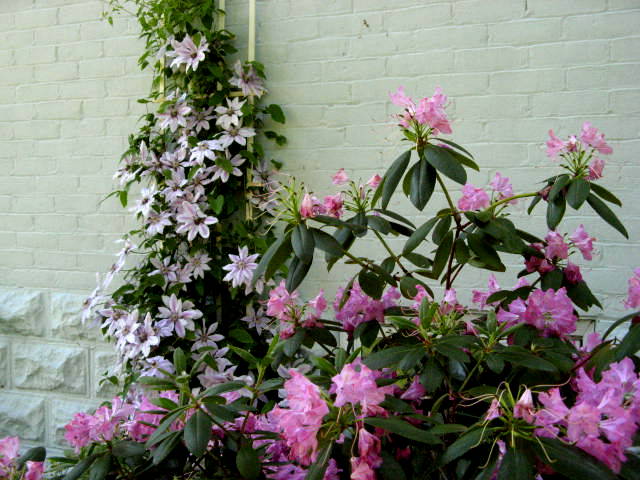
13) Surround a window with delicate stems.
To have the most healthy clematis, you will need to give them plenty of organic matter, and since they are heavy feeders, they tend to respond well to additions of well-rotted manure.
I have mine growing through ground-cover plants, which seem to help the ground-level soil stay cool and moist. It is true that clematis love shady roots and new shoots and sun on the top of the plant. This can be a bit tricky to figure out at first, but once a young plant matures enough to have some old wood stems, it is easy to train the new growth into the sun it prefers.
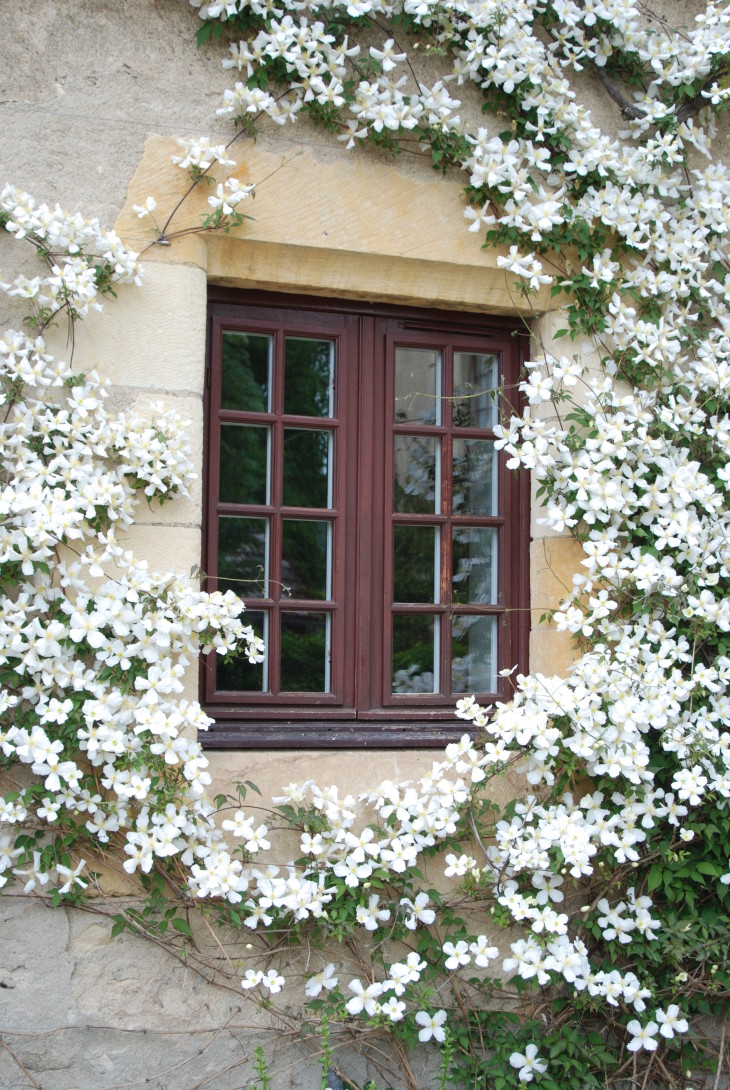
14) Where to plant a clematis – Engulf a front a pillar.
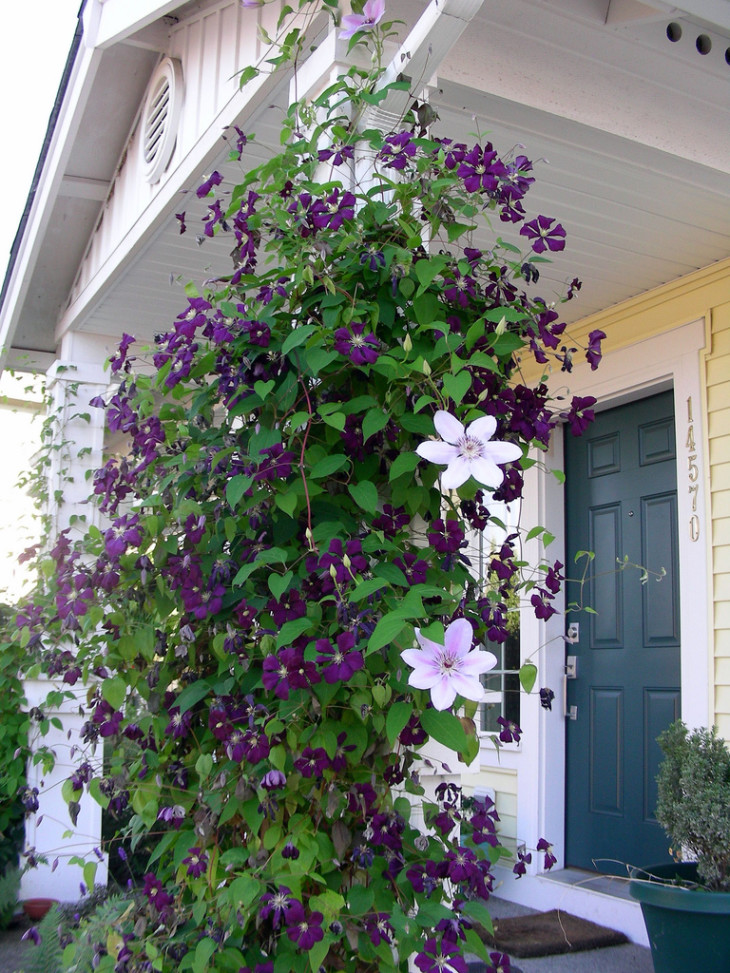
15 & 16) Go crazy and let clematis scramble
Let clematis ramble through climbing roses and under-plant with herbaceous perennials, including peonies, poppies, foxgloves, campanulas, pinks, nepeta, lavender, foxtail lilies, and alchemilla (among many others).
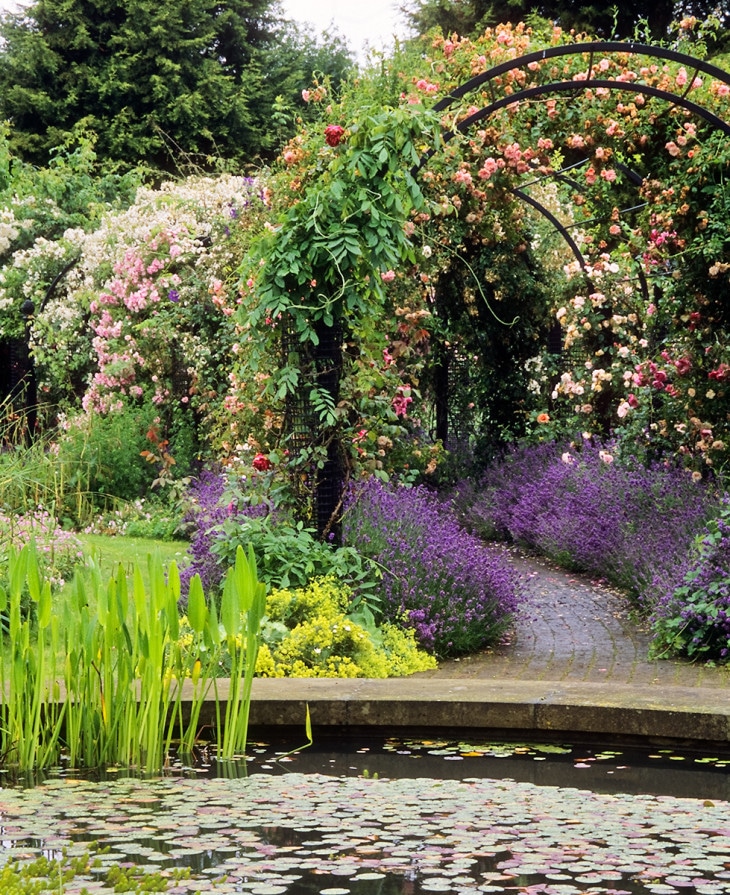
Just as soon as mine have grown enough to attach to their climbing frames (and I have found homes for each plant), I will share my own placements, including training over a pergola, covering a garage wall, and hiding part of the old chicken coop.
But have I missed anything? How and where do you grow your clematis?
Other Clematis Garden Posts you might enjoy:
Share this Post:

images: jacki-dee (CC BY-NC-ND 2.0), jacki-dee (CC BY-NC-ND 2.0), putneypics (CC BY-NC 2.0), jacki-dee (CC BY-NC-ND 2.0), Proven Winners, Karen Cardoza (CC BY-NC-ND 2.0), Klasse im Garten (CC BY-NC-ND 2.0), peri stracchino (CC BY-NC-ND 2.0), shout it from the rooftops (CC BY 2.0), caroline (CC BY 2.0), erik forsberg (CC BY 2.0), andrea_44 (CC BY 2.0),Rolf Blijleven CC BY-NC 2.0), B.D.’s WorldCC BY-NC 2.0), ukgardenphotos (CC BY-NC-ND 2.0).
Plant the
Just a couple, through a shrub or tree in English fashion (although difficult to train for best effect I have found), or in the cash of tube clematis, herclefolia, upright
http://talking-to-plants.blogspot.com/2012/09/tube-clematis-china-blue.html.
Happy to see so many plant combo options. I think it was Dan Hinkley who said/says “Vines and trellises did not co-evolve”.
Beautiful post and photos, had to RT! I have planning a clematis post for a while but waiting to get as many pics as this – they are one of the most exciting things to plant.
I love your garden. It is bright and so beautiful. I’m inspired to plant some climbers in my garden. Thank you so much for sharing your pictures and your knowledge.
Tammy in Tuskegee, Alabama
Love your clematis ideas…. I have also had the dilemma as to where to plant in a much smaller garden and had great success planting a Montana to climb up a blue Spruce tree and greater success with a Nelly Moser on a 5’ cedar tree stump eventually covering it like a swarm of bees … and ended up climbing further up into an adjacent magnolia tree.
Thank you for this post. I wanted to see what Clematis would look like growing on my front porch and this showed it perfectly.
I absolutely loved this post! The tips on placement and plant companions for clematis were super helpful. I never realized how much of a difference the right support can make. Can’t wait to try some of these ideas in my own garden! Thank you, Rochelle!